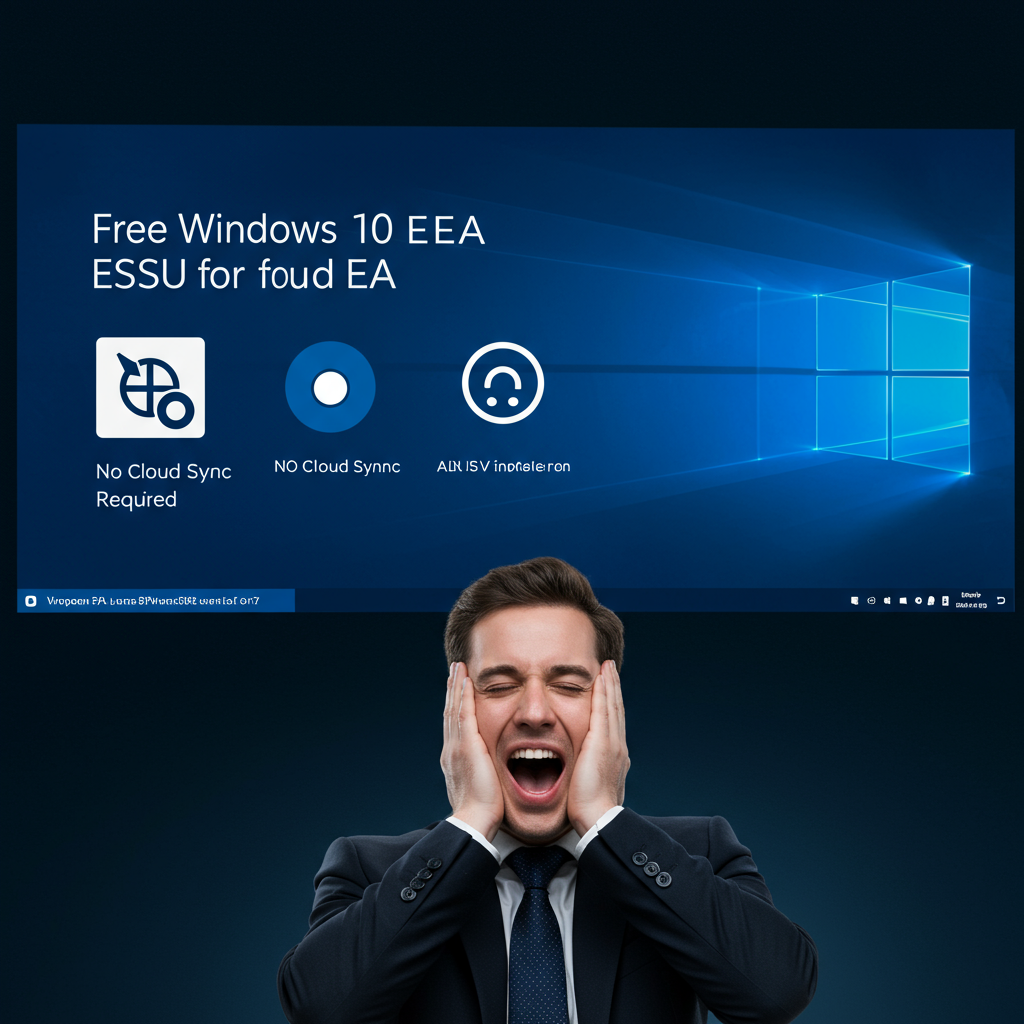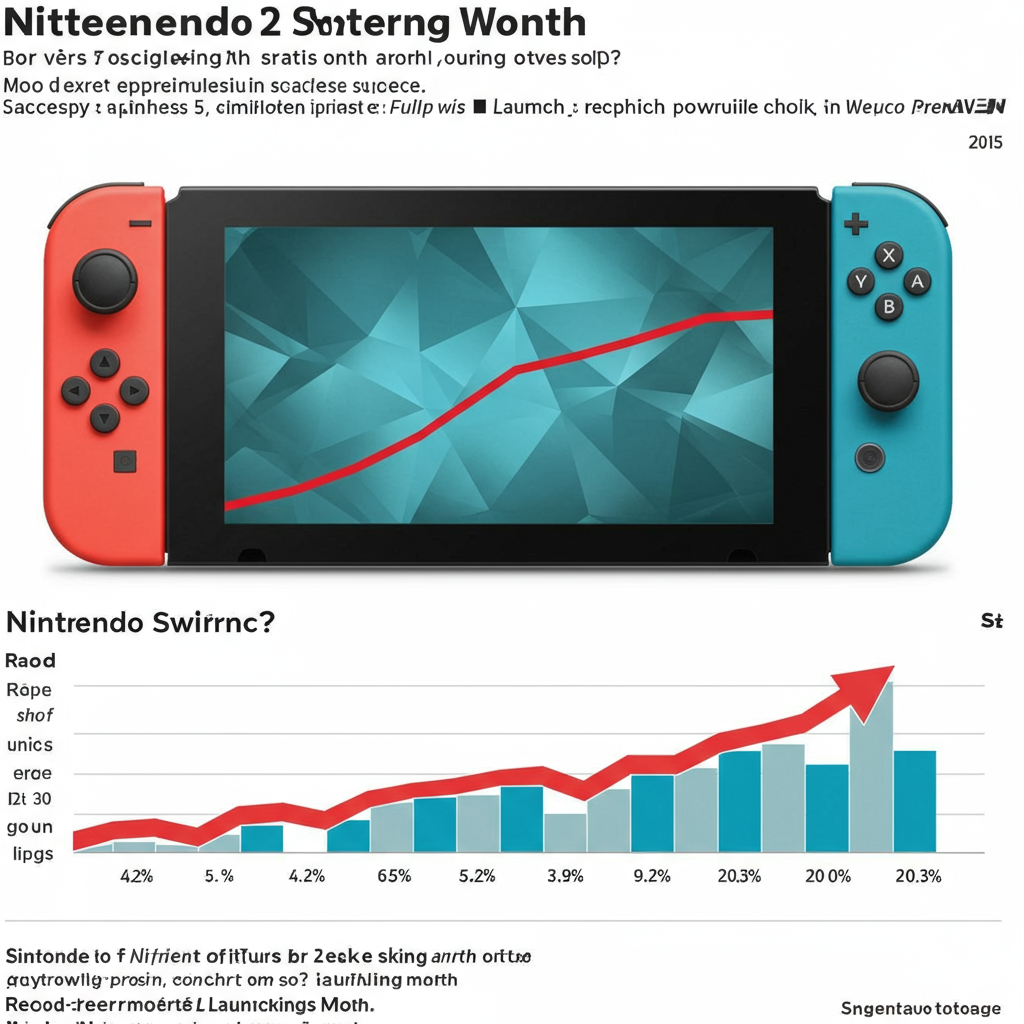Windows 10 users across the European Economic Area (EEA) can now breathe a collective sigh of relief. In a significant policy reversal, Microsoft has announced that its Extended Security Updates (ESU) program will be offered completely free for an additional year, pushing vital security support until October 14, 2026. Crucially, this welcome change removes the previously contentious requirement for users to sync their PC settings to the cloud via a Microsoft account.
This pivotal decision marks a major win for consumer advocacy and underscores the growing influence of European digital regulations. While the original end-of-support date for Windows 10 remains October 14, 2025, EEA users now gain a valuable 12-month extension of protection against escalating cyber threats without extra cost or intrusive conditions.
The Major Policy Shift: Free ESU for European Users
Microsoft has officially confirmed that access to its Windows 10 ESU program will be entirely free for users within the EEA, extending critical updates until October 14, 2026. This move directly addresses concerns raised by consumer defense organizations regarding the initial enrollment prerequisites. The most impactful change is the elimination of the mandate to sync PC settings to the cloud through a Microsoft account to qualify for the free year of security patches.
In a statement, Microsoft acknowledged that it is “making updates to the enrollment process to ensure it meets local expectations and delivers a secure, streamlined experience” within the EEA. The company’s overarching goal remains to support customers as they transition to Windows 11, ensuring “uninterrupted access to critical security updates.” This adjustment provides millions of Windows 10 users in Europe with a vital extra year of digital safety.
Why the Backtrack? Regulatory Pressure and Consumer Advocacy
This significant policy alteration is not a spontaneous gesture but a direct consequence of intense pressure from consumer protection groups like Euroconsumers. These organizations challenged Microsoft’s initial conditions for ESU access, arguing that linking security updates to financially beneficial actions for the company might violate provisions of the Digital Markets Act (DMA). The DMA, alongside the Digital Services Act (DSA), empowers European regulators to rein in the market dominance of large tech firms.
Euroconsumers confirmed this breakthrough, publishing an email from Microsoft that outlined the commitment to provide a no-cost ESU option for Windows 10 consumer users in the EEA. Importantly, this free option explicitly does not require users to back up settings, apps, or credentials, nor does it necessitate the use of Microsoft Rewards points. This regulatory influence has effectively compelled Microsoft to differentiate its ESU offering geographically, providing a more consumer-friendly option in Europe.
Understanding the New Enrollment Process for EEA Users
While the cloud sync requirement has been lifted, EEA users will still need to enroll in the free ESU program. This process will involve authenticating with a Microsoft account at least once every 60 days. Failure to sign in with a Microsoft account within this 60-day period will result in the temporary revocation of access to these extended security updates.
Microsoft’s ESU FAQ specifies that if a Microsoft Account is not used to sign in for a period exceeding 60 days, ESU updates will be discontinued. Users will then need to re-enroll by simply signing in again with the same Microsoft account. This ensures continued access to vital security patches. The enrollment itself is expected to be straightforward, likely accessible through a settings wizard in Windows Update by signing into a Microsoft account and following the prompts.
Benefits of the Free ESU for EEA Households and Small Businesses
For users in the EEA, seizing this free ESU offer provides several compelling advantages:
Enhanced Cybersecurity: It delivers essential security patches beyond the official support cut-off. These updates are crucial for averting ransomware attacks, curbing phishing incidents, and strengthening systems against the mounting cybersecurity risks projected for the coming years. Without them, systems become highly vulnerable.
Cost Avoidance: Users can avoid the significant financial impact of cyberattacks, which can be substantial for individuals and small businesses. The ESU also helps ensure compliance with directives like NIS2 without additional expenditure.
Deferring Hardware Upgrades: This extension offers a viable solution for users whose existing hardware cannot run Windows 11. It saves them from the hassle and expense of premature hardware upgrades, aligning with efforts to reduce e-waste from discarded devices.
A Two-Tier System: EEA vs. The Rest of the World
This policy divergence creates a distinct “two-tier system” for Windows 10 users globally. While EEA residents now enjoy free, less restrictive access to extended security updates, users outside the European Economic Area still face the original conditions. For them, access to the ESU program typically requires one of the following:
Signing in with a Microsoft account and syncing PC settings to the cloud.
Paying a fee, often around $30, for the first year.
Redeeming 1,000 Microsoft Reward points.
This disparity highlights how European data regulations, particularly the Digital Markets Act, are fostering enhanced privacy protections and shielding users from certain commercial pressures that Microsoft applies elsewhere. Critics argue that Microsoft should extend this “no strings attached” offer globally, questioning the fairness of different user experiences based solely on geography.
The Urgency of Windows 10 End of Support
The official end-of-support date for Windows 10 remains October 14, 2025. This means that after this date, devices running Windows 10 will no longer receive free security updates, non-security updates, or assisted support unless they are part of the ESU program. With hundreds of millions of Windows 10 PCs still in active use worldwide, this cutoff is set to impact a vast user base.
Operating an unsupported operating system poses significant cybersecurity risks. Without regular security patches, systems become prime targets for malware, ransomware, and other vulnerabilities. Cybercrime costs are projected to reach astronomical figures annually, underscoring the critical need for continued security updates. The free ESU in the EEA offers a vital lifeline, converting a policy victory into practical, cost-free digital protection for everyday users.
Beyond the Extension: Looking Towards Windows 11 and Alternatives
While the free ESU provides a crucial buffer, it’s essential for all Windows 10 users to consider their long-term options. Microsoft’s preference is for users to upgrade to Windows 11. However, many existing Windows 10 PCs do not meet Windows 11’s relatively stringent hardware requirements, leaving their owners unable to upgrade without purchasing new hardware.
For those who can upgrade, transitioning to Windows 11 offers a more modern, continually supported operating system. For those who cannot, or choose not to, the ESU program (whether free in the EEA or paid elsewhere) provides a temporary solution. Users also have the option to explore alternative operating systems, though this path involves a steeper learning curve and potential compatibility challenges. The goal for every user should be to ensure their device remains secure, whether through an upgrade, ESU enrollment, or a platform migration.
Frequently Asked Questions
What prompted Microsoft to offer free Windows 10 ESU in the EEA?
Microsoft’s decision to provide free Extended Security Updates (ESU) for Windows 10 users in the European Economic Area (EEA) was primarily driven by regulatory pressure and advocacy from consumer defense organizations like Euroconsumers. These groups challenged Microsoft’s initial ESU conditions, arguing they might violate the Digital Markets Act (DMA). The DMA, alongside the Digital Services Act (DSA), has influenced Microsoft to adapt its policies to meet “local expectations” and offer a more streamlined, consumer-friendly experience in the region.
How do Windows 10 users in the EEA enroll for these free Extended Security Updates?
To enroll for the free Windows 10 Extended Security Updates in the EEA, users will need to authenticate with a Microsoft account. While the previous requirement to sync PC settings to the cloud has been removed, a Microsoft account sign-in is still necessary for enrollment and to maintain access. Users must sign in with their Microsoft account at least once every 60 days; otherwise, ESU updates will be discontinued until re-authentication. The enrollment process is expected to be accessible through the Windows Update panel in settings, following on-screen prompts.
What are the consequences for users outside the EEA who don’t upgrade to Windows 11 or pay for ESU?
For Windows 10 users outside the EEA, the free ESU offer still requires syncing PC settings to the cloud via a Microsoft account. Alternatively, they must pay approximately $30 for the first year of ESU or redeem 1,000 Microsoft Reward points. If users do not upgrade to Windows 11 and also decline to enroll in the ESU program, their Windows 10 devices will cease receiving security updates after October 14, 2025. This significantly increases their vulnerability to cyber threats like ransomware and phishing attacks, making their systems highly insecure and potentially non-compliant with cybersecurity regulations.
Conclusion: A Win for European Consumers
Microsoft’s decision to offer free, unrestricted Extended Security Updates for Windows 10 users in the European Economic Area represents a significant victory for consumer rights and regulatory oversight. This move, extending vital security support until October 2026 without the burden of cloud syncing or payment, provides a crucial year of protection against an ever-evolving threat landscape. It underscores the profound impact of regulations like the Digital Markets Act in shaping global tech policies.
While this creates a “two-tier system” for Windows users worldwide, it offers tangible relief and actionable value to millions in Europe. As the October 2025 end-of-life date for Windows 10 approaches, EEA users can now take proactive steps to secure their systems without immediate financial or technical hurdles. All Windows 10 users, regardless of location, are encouraged to assess their options – be it enrollment in ESU, upgrading to Windows 11, or exploring alternatives – to ensure their digital future remains secure.




